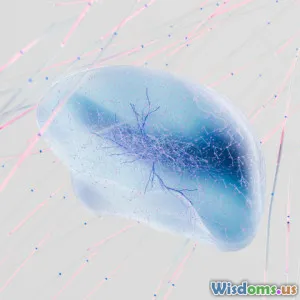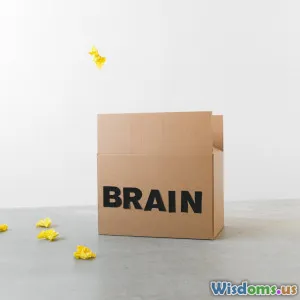
Sleep and Problem Solving: A Creative Partnership
7 min read Discover how sleep fuels problem solving and creativity through brain science and dream insights. (0 Reviews)
Sleep and Problem Solving: A Creative Partnership
The question of how we solve problems has captivated thinkers for centuries, but recent advances in brain science reveal a surprising partner in this process: sleep. Far from being a passive state, sleep is an active, dynamic period where the brain refines memories, reorganizes knowledge, and fuels creative problem solving. From groundbreaking studies to anecdotes of “sleeping on a problem,” the evidence points toward a fascinating, symbiotic relationship between sleep and our creative abilities.
The Sleep Problem-Solving Connection: Why It Matters
Before diving into the science, consider a familiar experience: you’re stuck on a tough problem, and after a good night’s sleep, a solution seems to naturally emerge. This everyday phenomenon isn’t just intuition—it reflects complex neural processes that transform fragmented information during sleep into coherent insights.
Understanding this connection can reshape how we approach challenges, improve learning, and even enhance innovation in fields ranging from science to the arts.
The Science Behind Sleep’s Role in Problem Solving
The Architecture of Sleep: More Than Just Rest
Sleep is composed of several stages, broadly split into Rapid Eye Movement (REM) and Non-REM (NREM) phases:
- NREM Sleep: This includes the deeper slow-wave sleep stages important for consolidating factual knowledge and strengthening memories.
- REM Sleep: Characterized by vivid dreams and heightened brain activity, REM is linked with emotional processing and creative recombination of ideas.
Studies show these stages work in tandem to help the brain reorganize and integrate information vital for problem solving.
Memory Consolidation: The Foundation of Insight
One of sleep’s fundamental roles involves consolidating new memories. During sleep, the brain replays experiences from the day, strengthening neural connections associated with learned material.
For example, research involving students learning complex tasks indicates that those who sleep after studying perform better in problem-solving tests compared to those who remain awake. This suggests memory consolidation during sleep lays the foundation for effective problem solving.
Unconscious Reorganization: Connecting the Dots in the Dark
While awake, our brains process information sequentially and analytically. During sleep, however, especially REM phases, the brain adopts a more associative, non-linear mode of thinking—allowing for the reorganization of diverse concepts and experiences.
Neuroscientist Matthew Walker notes in his book Why We Sleep that this “offline processing” enables the brain to form novel connections—akin to a natural form of analogical reasoning—critically underpinning creative problem solving.
Dreams: The Brain’s Creative Workshop
The Role of Dreams in Creativity
Dreams have long been a source of inspiration in human culture—famous discoveries, like the periodic table by Dmitri Mendeleev and the structure of the benzene molecule by August Kekulé, have been credited to ideas emerging during dreams.
Scientific studies corroborate this anecdotal evidence. During REM sleep, the brain’s cortex is highly active, generating vivid, often bizarre dream imagery, which can facilitate thinking beyond conventional patterns.
Experimental Evidence linking Dreams and Problem Solving
A landmark 2004 study by Deirdre Barrett at Harvard showed participants who incubated creative problems before sleep often dreamed about them. These dreams contained elements reflecting creative insights or directly solved the problems.
Furthermore, REM sleep deprivation impairs the brain’s capacity for creative problem solving, highlighting the importance of dream-related processes.
Practical Implications: Harnessing Sleep for Creative Problem Solving
Optimize Sleep Hygiene
Enhance cognitive performance by
- Maintaining a consistent sleep schedule
- Creating a calm, dark sleeping environment
- Limiting screen exposure before bedtime
Such habits ensure high-quality sleep, maximizing the brain’s problem-solving potential.
Leverage Naps Strategically
Power naps of around 90 minutes can include a full sleep cycle, providing benefits of memory consolidation and creativity boost. Studies at NASA with pilots showed that naps improved performance and alertness, suggesting similar gains for problem solving in daily life.
Use Incubation Techniques
Deliberately incubating problems before sleep can seed the unconscious mind for creative processing. Keeping a journal to jot down problems and dreams can also reveal unexpected insights upon waking.
Conclusion: Sleep as a Creative Partner
Sleep isn’t just a passive state but an essential collaborator with our conscious brain processes, particularly in solving problems and generating creative ideas. From deep memory consolidation in NREM sleep to the associative magic wrought during dreams, the brain leverages sleep’s unique neurophysiology in powerful ways.
As science demystifies this creative partnership, individuals—from students to professionals—can harness the power of sleep to unlock solutions that elude waking thought. Embracing sleep’s role in creativity not only enriches our understanding of the mind but empowers us to tackle problems innovatively and efficiently.
In the words of Thomas Edison, who famously napped regularly: “The best thinking has been done in solitude… the second best by sleeping.”
Sleep well, problem solve better, and let your dreams guide the way.
References:
- Walker, Matthew P. Why We Sleep. Scribner, 2017.
- Barrett, Deirdre. “The Committee of Sleep.” New York Times, 2001.
- Wagner U., Gais S., Haider H., Verleger R., Born J. (2004) “Sleep inspires insight.” Nature, 427, pp. 352–355.
- NASA Technical Reports on pilot naps and cognitive performance.
Rate the Post
User Reviews
Popular Posts





















